Author: Sujata Sawai and Tai Yossiree, Class of 2011
On a bright Saturday afternoon, some thirty of us gathered together at Graduate Hall grounds to celebrate the advent of spring and celebrate two of Asia’s widely celebrated festivities – Songkran from Thailand and Holi, from India, last 16th of April. In fact Holi has been celebrated at Nanyang by the MBA students for the last 3 years, while this is the first Songkran event celebration at Nanyang. And celebrating this together is a first too, we believe!
Songkran day is the celebration of Thai New Year, which falls in the middle of April of each year, and it is celebrated all over Thailand. With a long history people gather on the streets with water containers, water guns and white powder and splash or throw them on friends or passerby. However, on a serious note, the main purpose of Songkran day is to pay a visit to family or elders, and also to go to temple for Buddhist activities as Thais look forward to a better year.
Coming from Thailand (yes, that’s me – Tai), I feel that my classmates should not only experience Songkran the way how it is celebrated, but also to create a sense of unity as a family – doing activities outside of academic life like having fun together. Like what Songkran festival is all about – together, we will ‘wash away’ the sadness, tiredness and stress from our studies, and be ready for the new year to come!
Holi, on the other hand, is the spring religious festival celebrated by Hindus and dates back many centuries ago. It is primarily observed in India, Nepal, and Sri Lanka and countries with large Indic diaspora populations, such as Suriname, Malaysia, and Guyana, among others. Holi is celebrated at the end of the winter season on the last full moon day of the lunar month Phalguna (February/March), which, for this year, fell on 20th of March. Like Songkran, Holi is celebrated by throwing colored powder (dye powder) and colored water at each other. Traditionally, playful throwing of colored powder and water has medicinal significance, especially during the onset of spring which normally brings viral fever and cold due to change of weather (reference: Wikipedia.com).
Finding clothes to discard was easy. We had to since we wanted to have fun throwing colored water and colored powder at our classmates- we knew that our clothes will be soiled and will be thrown away after the celebrations. We had a fantastic time splashing one another with colored water!
Three stooges all soiled up – me (Tai) in the middle with Snigdha (left) and Reynold (right)
We ran across the huge vacant field beside our graduate residence hall, and no one escaped the flurry of powder and water.
Esmond’s makeshift shower but making a mess out of Alejandra (left) and Flora (right), while lonesome Scott pretends to be a Red Indian.
Zos is trying to be serious out here, while Claudia playfully poses to the camera (Thank you both for the awesome photos!)
Everyone was ecstatic with joy as we messed our clothes – some went stumbling down on the ground laughing, diving into a mixture of mud and colored water, while others chased madly those who have not been messed up with buckets of it (yes, buckets!) and ensured that they are messed up as well. Here at Nanyang, we ‘hit a lot ’ with this joint celebration – we gathered as family, we cooled ourselves from the hot and humid weather of Singapore during this time and cooled down from the stress from studies, as well! Just like how I experienced it in India (Sujata), the day was filled with the spirit of joy, naughtiness, passion and enthusiasm. Even one of our classmates, Claudia, wished that there were celebrations like this in her home country – Germany! As Claudia puts it, “I really enjoyed celebrating Holi & Songkran with my fellow students. It was the first time for me to get to know these celebrations and helped me in understanding and experiencing Thai and Hindu culture. While we were throwing colours and water at each other, everybody was cheering, laughing. In the end, I was completely covered in all kinds of colours… it was just a lot of fun! I wish we had a Holi and Songkran celebration in Germany, too! The cross-cultural festivals at NBS, like Mid-Autumn festival, Diwali and Holi & Songkran celebration, make my MBA in Singapore a memorable and unique experience for me. I’m looking forward to more of these!”
Our classmates are having a fantastic time (topmost photo); We still look good despite being so ‘colorful’ – (from left to right) Mandar, Me (Sujata), Sameer and Vidushi.
And to end this day of fun, we had good food to nourish our near-aching bodies [from all those running and stumbling, and getting hit by throwing water]. We feasted on an awesome assortment of Thai and Indian food like Veg Pakoda, pineapple fried rice, Thai fish cake, and Thai banana in coconut milk (Prof Siri, you are fantastic in preparing this for us!). Nothing beats a hungry stomach, so we emptied everything on the table!
A shout out of thanks to our Student ExCo and the rest of our classmates for making this double celebration more fun and exciting! Who says that MBA students are no fun at all?

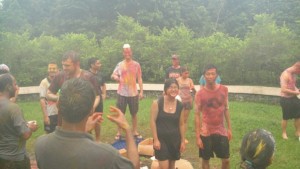

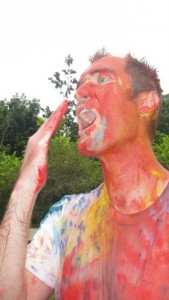



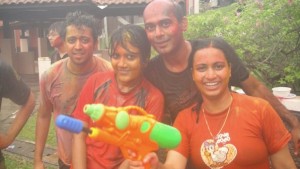
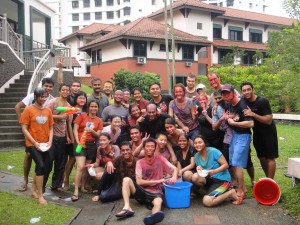




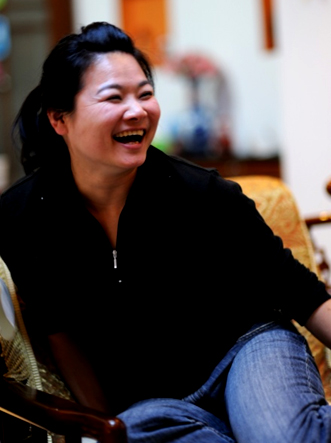

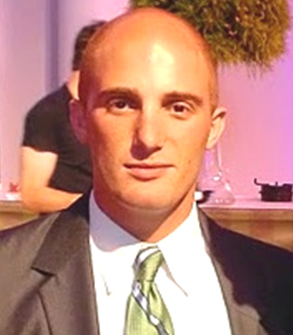

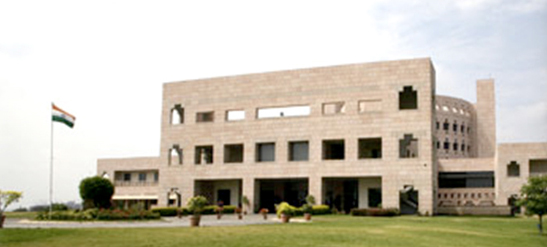



You must be logged in to post a comment.